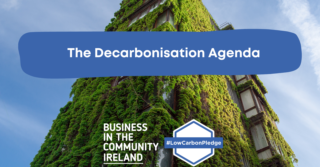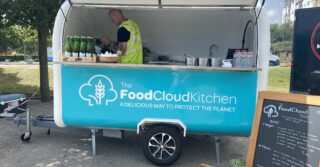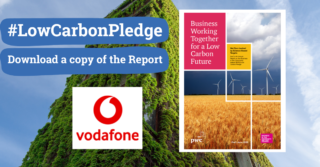#Earth Hour: The role of business in preserving nature
Earth Hour 2022 has a special focus on the critical importance of nature preservation, hoping to increase awareness and spark global conversations on nature loss, tackling the climate crisis, and how we can work together as a society to shape a brighter future for us all.
To mark this important event we want bring the business case for nature into the spotlight and share how some of our members incorporated nature preservation initiatives into their business culture. Here are some ways in which businesses can play a big part in protecting our natural habitats, with examples from our members.
Intel’s bog restoration and clean water initiatives
Intel Ireland has a long history of leading on voluntary on-site biodiversity action in Ireland.
On 20 May, 2021, Intel and the National Parks and Wildlife Service (NPWS) launched a blanket bog restoration project in the Wicklow Mountains National Park (WMNP). The restoration project will see 60 hectares of drained bog re-wetted to increase water storage levels in part of the River Liffey headwaters by an expected 50-90 million litres. These headwaters supply the Poulaphouca (Blessington) reservoir, a drinking water source for the Greater Dublin Area. The bog restoration will also protect biodiversity, improve carbon storage, and is likely to improve water quality.
Most recently, Intel have shared their water conservation journey in an interactive document part of the Intel Ireland Environmental Series
Gas Networks Ireland’s Leave No Trace Partnership
As part of its commitment to supporting environmental, social and economic sustainability, the national gas network operator is working with Coillte and the Burncourt Community Group to help the former demesne woodland recover the natural qualities lost through the impact by littering and trail erosion. The Leave No Trace Hot Spot programme is a critical initiative designed to address areas impacted by outdoor activities and heavy use so they can be restored and thrive again.
Glengarra Wood will receive a unique, site-specific blend of training, expert consulting, education programmes, service projects, monitoring programmes and more, resulting in a sustainable outdoor area that is on the road to recovery.
Importantly, the programme also teaches people how to make responsible decisions when participating in outdoor activities, to promote a sense of stewardship for the natural world and an understanding of how to reduce your carbon footprint.
Gas Networks Ireland volunteers will remove invasive species, plant native trees, clear access for recreation and remove litter and waste. The team will also hold a Hot Spot “BioBlitz”, recording all species sightings and collating them into one database to compliment the development of the biodiversity action plan.
Understanding ecology at Cook Medical
Cook Medical is located on the banks of the Shannon on the outskirts of Limerick city and is surrounded by a number beautiful natural habitats that both staff and members of the public enjoy on a regular basis. In
2018, they created a walking path around the grounds and incorporated biodiversity in the planning routes, using the advice and assessment of our Biodiversity Specialist to enhance the habitats they had on the grounds.
Currently, the site features seven different habitat types, including three of particular ecological note:
Hedgerows and Treelines
The hedgerow and treeline flanking the south-western edge of the site is shown as a treeline in old maps from the start of the 20th century, and has a number of impressive old trees. There is an impressive diversity of tree
and shrub species within the hedgerow, which is greatly enhanced by the presence of a small stream at the south-western side and by its generous width at the base. Old, wide hedgerows provide habitat for many species of plants and animals, and so are of great biodiversity value.
Riverside Woods
While the riverside woods are severely compromised by non-native and highly invasive species such as Himalayan balsam and giant hogweed, it is still an area of high importance at this site due to its setting, beauty, and
ecological value. This site runs directly adjacent to (and may have small portions within) the Lower River Shannon Special Area of Conservation.
Fields
The large fields of calcareous grassland are not particularly diverse in terms of species, but those present point to the fact that the area is not intensively managed and has not been re-seeded, making it likely to be valuable for
wildlife. There are many herbaceous plants, and grasses form a smaller
proportion than in an intensively managed field.
These are only a few examples of how businesses can support the restoration and preservation of nature we so urgently need. Find out more about our biodiversity offering through the #LowCarbonPledge
To learn more about the business case for biodiversity, download our Biodiversity Handbook for Business.






